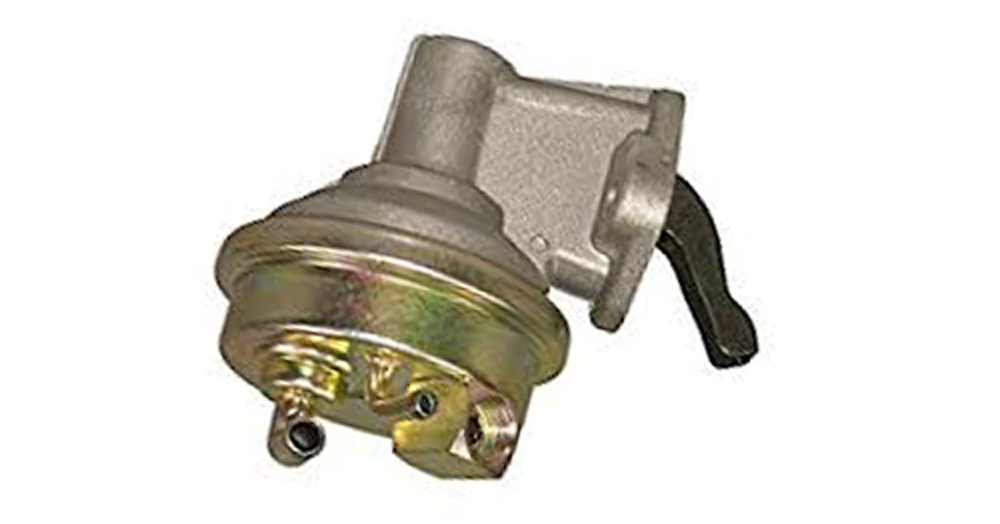Most modern vehicles use electric fuel pumps, but anyone who works on older models and classic cars must be familiar with mechanical fuel pumps. Amateurs may be tempted to blame the fuel pump for problems with drivability and hard starting, but the pros know that the gasoline itself may be at fault. Once the fuel has been ruled out as a potential cause of the problem, the most common fuel pump issues include a ruptured or leaky diaphragm, failed check valves, and a faulty diaphragm spring.
Is the Fuel Causing the Problem?
If the engine lags during acceleration after having idled for a long time or a short engine shut off, then you may be experiencing vapor lock. Other symptoms include lack of fuel pressure, no accelerator pump discharge, or dry carburetor air horn. You can also experience this on a hot day while driving.
If, after filling the tank with fresh gas, the engine lags or jerks repeatedly during acceleration and then dies, fuel foaming could be the cause. Fuel foaming happens when cold gas comes in contact with a hot carburetor fuel bowl. Evidence of this condition includes normal fuel pressure, normal accelerator pump discharge, wet carburetor air horn, black exhaust smoke, and the engine starting after a wide open throttle crank.
Gasolines that contain octane boosters or alcohol may alter volatility, which can cause drivability problems or hard starting. Alcohols can corrode components throughout the fuel system resulting in particles that clog the fuel filter and alter the air/fuel mixture.
I Think the Mechanical Fuel Pump Is the Culprit!
An engine that misfires, runs lean, hesitates, or stalls could have a leaking diaphragm or valve within the fuel pump. Both of these problems cause the fuel pressure to drop, starving the carburetor of gasoline and creating the above symptoms. If the pump dies, then a complete lack of fuel in the carburetor means the car will not start or run.
Before troubleshooting the fuel system, remember that leaking or exposed gasoline is flammable. Avoid smoking near the fuel and do not allow any sparks near the open fuel line or carburetor. Try to avoid touching the gas with bare skin or breathing its vapors.
Now that you have created a safe working environment, there are four main ways to check the mechanical pump:
- Remove the air cleaner. While looking in the throat of the carburetor, pump the throttle linkage. A working pump will squirt fuel into the carburetor. However, if no fuel appears, then verify the tank has gas and check both the fuel line and fuel filter for blockages.
- Inspect the fuel pump visually. If fuel is dripping, the diaphragm is faulty and you need a new pump.
- Detach the fuel line from the carburetor and put it in an empty container. Crank the engine and watch how the fuel flows from the line. If you see steady, strong spurts, then the pump works. If you see a weak stream or nothing at all, then you could have a failed pump, a blocked fuel line, a clogged fuel filter, or an empty gas tank.
- Check the fuel pump pressure. Attach a fuel pressure gauge either to the fuel line at the carburetor or to the pump outlet then crank the engine. If the pressure is lower than specifications, or nonexistent, then the pump should be replaced.

